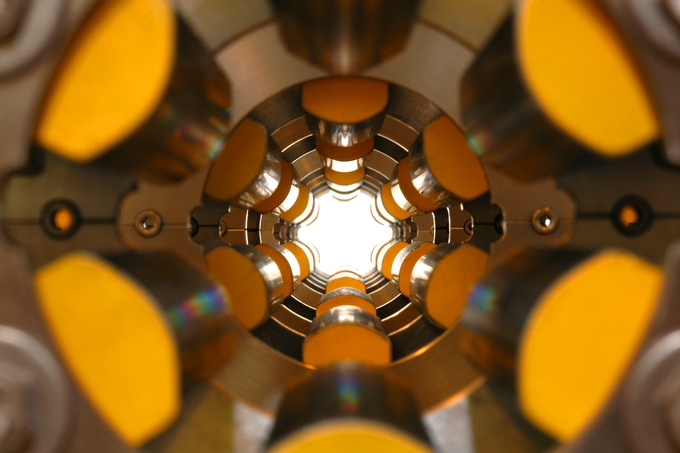 |
| A sextupole magnet at the DLS, ref. |
Synchotrons allow the inspection and analysis of chemical mechanisms and material structures (among other uses) with real world results. The DLS has been used for vast numbers of projects including research into cancer, jet engines and Alzheimer's.
 |
| Diffraction pattern of Serine Racemase, ref. |
Diamond, opened in early 2007, currently has 13 fully operational beamlines, where research is carried out (with a further 5 undergoing optimisation and 8 under construction or in the design stages). Time at these beamlines is allocated according to scientific merit and is highly sought after.
Unfortunately for the DLS it is likely to have development put on hold, and possibly have beamtime reduced.
This comes from the announcement, on September 8th, that science funding may be cut by as much as 25%. These cuts will fall hard where they do fall, the UK is tied into a number of large international projects to which it cannot withdraw funding (such as CERN), therefore the cuts will fall at home.
Enter the DLS. It is almost completely government funded (though the Wellcome Trust stump up 15%) and costs a lot to upgrade and run. UK universities will also see up to 35% cuts, with research grants and PhD funding allocated to fewer scientists. Dr Evan Harris dissects the Government's science funding policy nicely.
This will cripple the UKs ability to recover economically and scientifically (see box) when we already fall well below the average OECD expenditure on Research & Development.
Title with thanks to Dylan Thomas from "Do not go gentle into that good night".
Disclaimer: I have discussed the a DLS based research project with a potential doctoral supervisor, I am not undertaking that particular project.
No comments:
Post a Comment